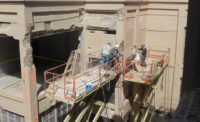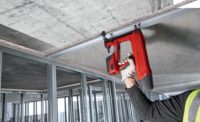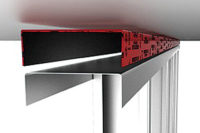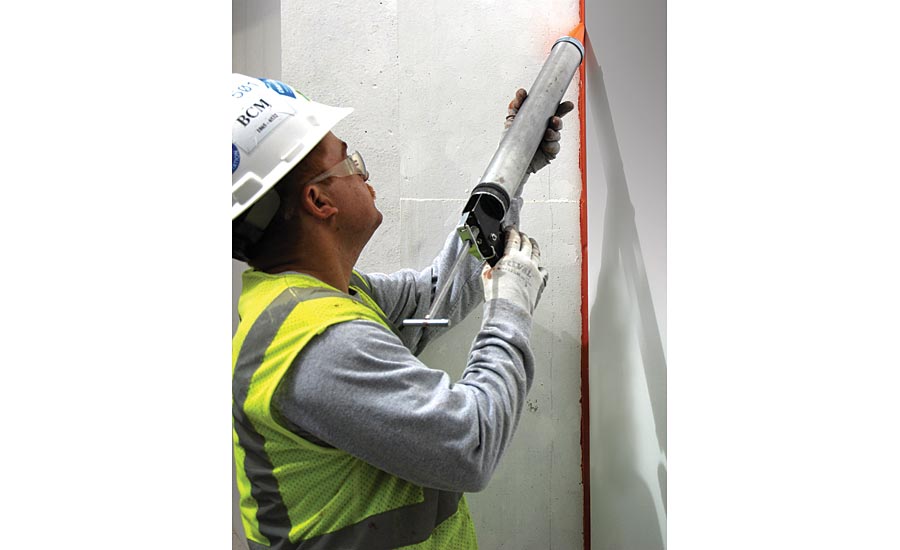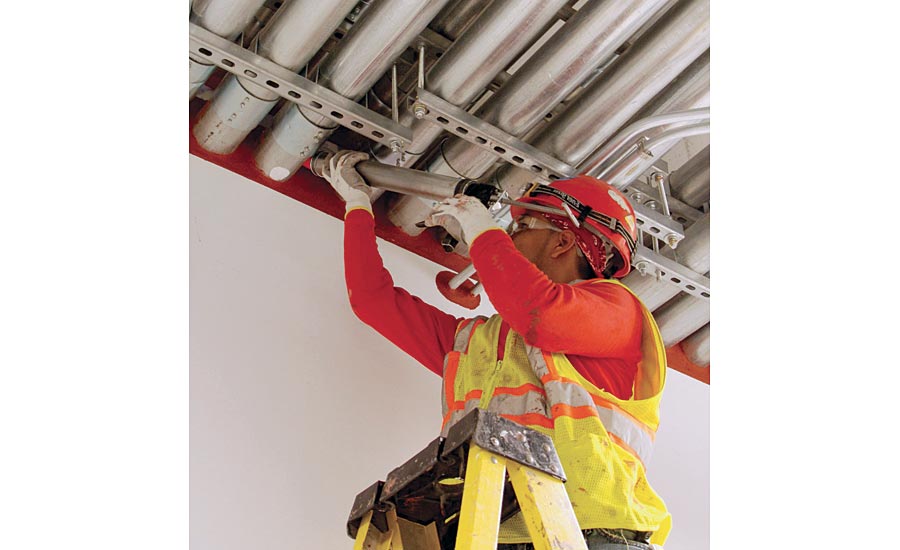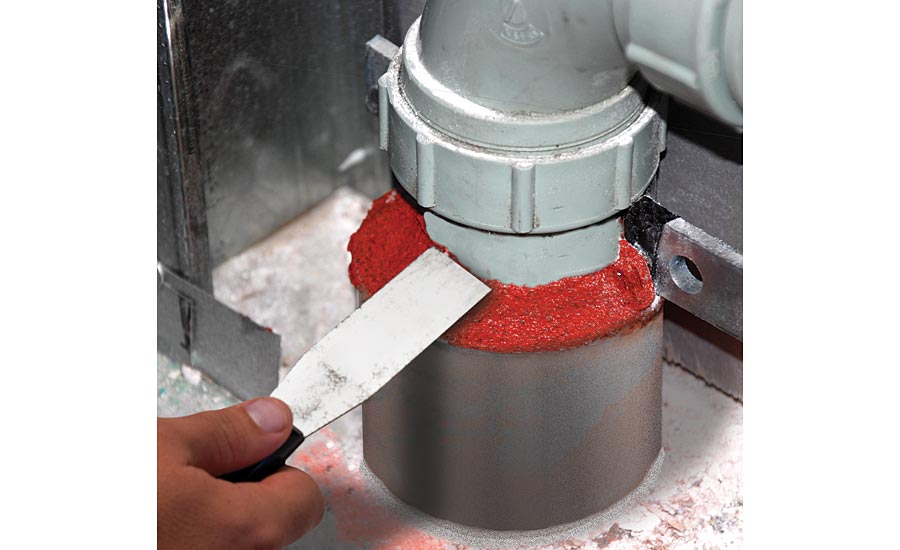Six Common Firestop Mistakes
When an inspection fails on a project in regards to firestopping, there are six common mistakes.

Firestop manufacturers have created firestop foam strips that expand into ceiling/wall voids during a fire incident to prevent smoke and flame from infiltrating neighboring spaces.

Firestop manufacturers have created firestop foam strips that expand into ceiling/wall voids during a fire incident to prevent smoke and flame from infiltrating neighboring spaces.


Firestop manufacturers have created firestop foam strips that expand into ceiling/wall voids during a fire incident to prevent smoke and flame from infiltrating neighboring spaces.

Firestop manufacturers have created firestop foam strips that expand into ceiling/wall voids during a fire incident to prevent smoke and flame from infiltrating neighboring spaces.

Firestop manufacturers have created firestop foam strips that expand into ceiling/wall voids during a fire incident to prevent smoke and flame from infiltrating neighboring spaces.

Firestop manufacturers have created firestop foam strips that expand into ceiling/wall voids during a fire incident to prevent smoke and flame from infiltrating neighboring spaces.







Firestopping is one commercial building trade that doesn’t require licensing, qualifications or training. Firestop is also one of the few building product systems that can be installed by a variety of trades, ranging from mechanical, electrical and plumbing contractors to general contractors and interior finish/drywall installers.
However, firestopping does fall under strict inspection protocol typically based on the International Building Code, because it’s vital to occupant life-safety. Site inspections help assure firestop installations will function as designed and tested during a building catastrophe and stop the infiltration of life-threatening smoke and flame to adjacent areas.
Side Job: Choosing the Right Firestop Can Reduce Job Costs
A California commercial building project saved thousands of dollars by using the right firestop material on a fluted metal deck. Originally, the contractor was planning to cut hole penetrations, fasten a sheet metal plate over the hole and fill the voids around the plate with mineral wool, then secure an intumescent collar to the plate that surrounds the penetrating pipe with firestop. The contractor estimated eight could be installed daily. Instead, the contractor cut holes and used an intumescent firestop sleeve designed for fluted and corrugated metal decks, which resulted in completing eight per hour. Calling a manufacturer for free jobsite training before firestopping could result in significant savings.
Firestopping is critical, however inspectors still report ongoing patterns of installation mistakes that fail inspections. Although there is no licensing in firestopping, the trade association International Firestop Council, Tulsa, Okla., and a variety of firestop manufacturers offer installation training for contractors wishing to become familiarized with the proper techniques of installation. IFC offers “Firestop 101,” a free online training program, written by industry experts, provides the basic fundamentals necessary to install firestop. Meanwhile, several firestop material manufacturers offer web based education, and some provide personal hands-on firestop installation training at no charge.
There are also professional firestop installer qualification programs governed by Underwriters Laboratories, Northbrook, Ill., and Factory Mutual (FM Global), Johnston, R.I., which provide a very high level of education and assurance for the firestop installer. Furthermore, Firestop Contractors International Association Hillside, Ill., trains and lists UL and FM approved professional firestop installation contractors at FCIA.org.
On-site, hands-on training by manufacturers is also invaluable for cutting job expenses, because trainers can provide guidance to contractors on the appropriate product to use on any application. This assistance can help increase profitability by reducing installation time or material costs.
The Six Common Firestopping Mistakes
Even with a broad range of available educational opportunities, inspectors still find the following six mistakes:
1. Using an Unlisted Firestop Product
While most firestop materials are tested and listed under UL or other test labs, some are not. Using a non-listed firestop material will surely fail an inspection. Firestop compounds for joint systems between walls or between walls and ceilings must be listed and tested under the UL 2079 or ASTM E1966–Test Standard Method for Fire-Resistive Joint Systems. For wall or ceiling penetrations, the firestop material must carry an UL 1479 or ASTM E814–Fire Tests of Penetration Firestop Systems listing. While most wall and ceiling contractors are mainly concerned with joints, firestop penetrations installed by HVAC, plumbing or electrical contractors should be closely scrutinized, because many times these penetrations affect the wall rating and integrity.
2. Using the Wrong Firestop Material for the Application
Firestop materials are developed for specific applications. It’s common for contractors to use a material that either isn’t well-suited or designed for the application. For example, some firestop materials are approved for only metal pipe penetrations, but contractors also attempt to use the same material for plastic pipe, even though it’s not tested or listed for that application. Metal pipe firestop material may not perform up to specifications with plastic pipe, because it wasn’t tested for that application. Using the wrong firestop material for an application could be life-threatening during a fire.
3. Improper Depth of Firestop Material Within the Substrate
ASTM test standards require a fire-resistive joint system or penetration to have an acceptable depth of material to properly close a fire incident void. A joint or void must be firestopped with the proper depth and type of firestop material to protect the assembly. Insufficient depth can occur unintentionally due to poor training, or intentionally in an attempt to save project costs. A random sampling by an inspector will reveal the firestop material’s actual depth. Additionally, it is important to understand that the depth of sealant may differ when the hourly rating, material of construction or required movement of the assembly changes.
4. Using Materials Not Tested for Firestop
Contractors uninformed in firestop installation, technology and its importance in saving lives, sometimes use materials that are not tested and approved as firestop. Drywall mud, for example, can seal joints, but it has no equivalent firestop system listing for protecting through penetration firestop systems. There’s also a frequency of contractors using construction site products that aren’t tested and approved, such as expanding type polyurethane insulation to fill piping penetration voids. These materials will obviously fail inspections since they are not a tested firestop product.
5. Poor Firestop Installation Coordination with On-Site Inspector Visits
It’s best to schedule on-site firestop inspections on the day(s) when firestop installation is planned. An inspector that’s on-site witnessing installations is better positioned to determine proper system installation and less likely to perform post installation destructive sampling; reducing destructive inspection, which removes installed material to verify system requirements. This results in less sample repairs, saving labor and material costs and helps keep the project timeline on track. For more information on how firestop is inspected, contractors can review ASTM E2393– Standard Practice for On-Site Inspection of Installed Fire Resistive Joint Systems and Perimeter Fire Barriers; and ASTM E2174–Standard Practice for On-Site Inspection of Installed Firestops, or contact the IFC to learn more.
6. Not Installing Firestop
Believe it or not, most of the time building inspectors examine fire-rated walls/ceilings and find no firestop at all. This occurs when it’s not determined which contractor is responsible for firestopping, there’s a lack of education about firestopping codes, or on very rare occasions, deliberate code disobedience. Obviously, installing firestopping in fire-resistive assembly joints or penetrations is necessary, and the impact on life-safety can be substantial when proper firestop applications are not used.
While firestopping is generally noted in the architectural documents and is always required when a building has fire-rated walls/ceilings, it’s rare for architects to detail a specific firestopping method or material that must be installed. There are many types of firestopping methodologies and products available today, such as caulking sealants, putties, mortars, pillows, composite sheets, spray-on mastics, pipe collars, intumescent sleeves, joint strips, wrap strips and cast in-place devices. Training is invaluable for choosing the best product for an application, passing inspection, and reducing labor and material costs.
Firestopping trends today point toward installing preformed materials versus making or applying materials. For example, manufacturers offer compressible intumescing foam strips that is much quicker to apply than sprays or caulks for firestopping dynamic and static head-of-wall, bottom-of-wall and wall-to-wall fire-resistive joints. For pipe penetrations, there are preformed sleeves and collars that can save job labor costs.
Training provided free by associations or from manufacturer programs is essential in building life-safety; they will also eliminate inspection failures and produce a better application that might save lives someday.
Looking for a reprint of this article?
From high-res PDFs to custom plaques, order your copy today!



